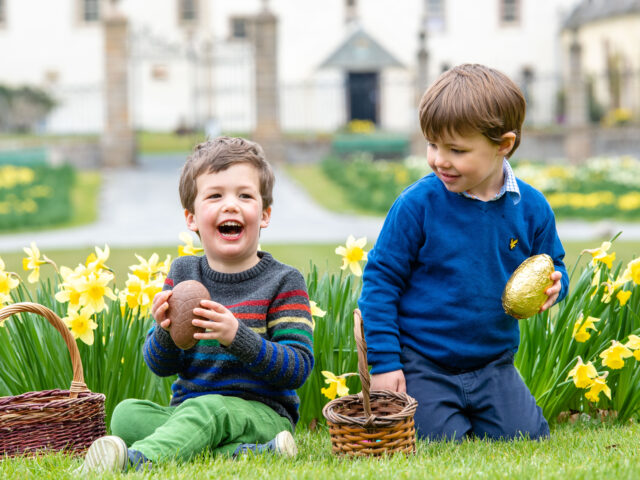Easter, celebrated by over two billion Christians worldwide, is one of the most significant religious holidays on the calendar. While the core theme remains the same across the globe – the resurrection of Jesus Christ – the way it is celebrated can be vastly different from one country to another. In this blog post, we will embark on a journey to explore Easter traditions around the world, gaining insight into the diverse ways people commemorate this sacred holiday.
United States – Egg Hunts and the Easter Bunny
In the United States, Easter is synonymous with brightly colored eggs, chocolate bunnies, and joyful egg hunts. The tradition of the Easter Bunny, a whimsical character who delivers treats to children, has been a part of American culture since the 18th century. Children eagerly await Easter Sunday morning to search for hidden eggs filled with candy and small toys. These lively egg hunts are not only a source of great fun but also symbolize the resurrection of Jesus, with the egg representing new life.
United Kingdom – Simnel Cake and Morris Dancing
Across the pond in the United Kingdom, Easter traditions include the baking of a special fruitcake called Simnel cake. This delectable dessert, topped with marzipan, is often decorated with 11 marzipan balls, symbolizing the 11 disciples (minus Judas) who remained loyal to Jesus. Families also gather for Easter Sunday roast dinners, where lamb is a popular choice, symbolizing the Lamb of God.
Another fascinating British tradition is Morris dancing, which takes place in various regions during Easter. Dancers, dressed in colorful costumes adorned with bells, ribbons, and flowers, perform intricate dances that have roots dating back centuries. Morris dancing adds a lively and unique touch to Easter celebrations in the UK.
Spain – Semana Santa Processions
Spain boasts one of the most visually stunning Easter traditions in the world: the Semana Santa processions. This week-long event leading up to Easter Sunday is a solemn and elaborate affair featuring hooded penitents, ornate floats, and brass bands. Each Spanish city has its own unique procession, with Seville’s being the most famous. The atmosphere is somber and reflective, commemorating the passion and crucifixion of Jesus Christ.
Greece – Midnight Resurrection Service and the Breaking of Red Eggs
In Greece, Easter Saturday is a night of great anticipation and excitement. At midnight, churches across the country hold a candlelit Resurrection service. The moment the priest proclaims, “Christos Anesti” (Christ is Risen), the congregation erupts in cheers and fireworks light up the sky.
One of the most cherished Greek traditions is the breaking of red eggs. Family and friends each hold a red egg and take turns trying to crack the opponent’s egg without damaging their own. This symbolizes the resurrection of Jesus, with the eggshell representing the sealed tomb.
Sweden – Easter Witches and Bonfires
In Sweden, Easter takes a unique turn with the tradition of Påskkärringar, or Easter witches. Children dress up as witches, complete with broomsticks and painted faces, and go door-to-door, exchanging drawings and paintings for candy and treats. This tradition has its roots in old folklore, where it was believed that witches would fly to a place called Blåkulla on Easter Sunday.

Another Swedish Easter tradition is lighting bonfires on Easter Saturday night. These bonfires symbolize the victory of light over darkness and the arrival of spring. Families and friends gather around the fires to celebrate the season’s changing fortunes.
Australia – Easter Bilby
In Australia, the Easter Bilby has started to replace the Easter Bunny in an effort to raise awareness about the endangered bilby species, which is native to the country. The Easter Bilby brings chocolates and treats to children, and its popularity has contributed to the conservation of these marsupials.
Australia’s climate allows for unique Easter traditions, such as picnics, barbecues, and outdoor activities. Families often head to the beach or enjoy the autumn weather in parks, making Easter a time for relaxation and connection with nature. If you enjoyed this article about the easter traditions around the world then visit BibleKeeper for more interesting articles.
Conclusion
Easter, a celebration of the resurrection of Jesus Christ, unites Christians around the world in their faith. Yet, the diversity of Easter traditions across different countries and cultures is a testament to the richness of human history and creativity. From egg hunts in the United States to Semana Santa processions in Spain, each tradition carries its own unique significance and adds to the global tapestry of Easter celebrations. Exploring these diverse traditions allows us to appreciate the beauty of our shared humanity and the universal hope that Easter represents – the triumph of life over death.




